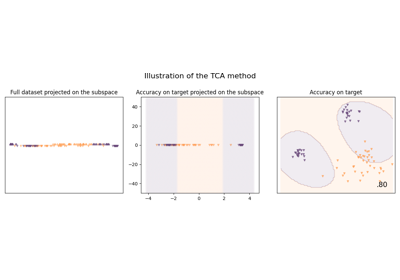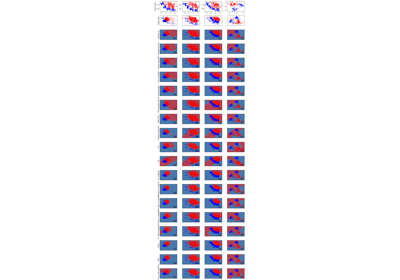skada.TransferSubspaceLearning
- skada.TransferSubspaceLearning(base_estimator=None, n_components=None, base_method='flda', length_scale=2, mu=0.1, reg=0.01, max_iter=100, tol=0.01, verbose=False)[source]
Domain Adaptation Using Transfer Subspace Learning.
- Parameters:
- n_componentsint, default=None
The numbers of components to learn. Should be less or equal to the number of samples of the source and target data.
- base_methodstr, default='flda'
The method used to learn the subspace. Possible values are 'pca', 'flda', and 'lpp'.
- length_scalefloat, default=2
The length scale of the rbf kernel used in 'lpp' method.
- mufloat, default=0.1
The parameter of the regularization in the optimization problem.
- regfloat, default=0.01
The regularization parameter of the covariance estimator. Possible values:
None: no shrinkage.
float between 0 and 1: fixed shrinkage parameter.
- max_iterint>0, default=100
The maximal number of iteration before stopping when fitting.
- tolfloat, default=0.01
The threshold for the differences between losses on two iteration before the algorithm stops
- verbosebool, default=False
If True, print the final gradient norm.
- Returns:
- pipelinePipeline
A pipeline containing a TransferSubspaceLearning estimator.
References
[27][Si et al., 2010] Si, S., Tao, D. and Geng, B. Bregman Divergence-Based Regularization for Transfer Subspace Learning. In IEEE Transactions on Knowledge and Data Engineering. pages 929-942

